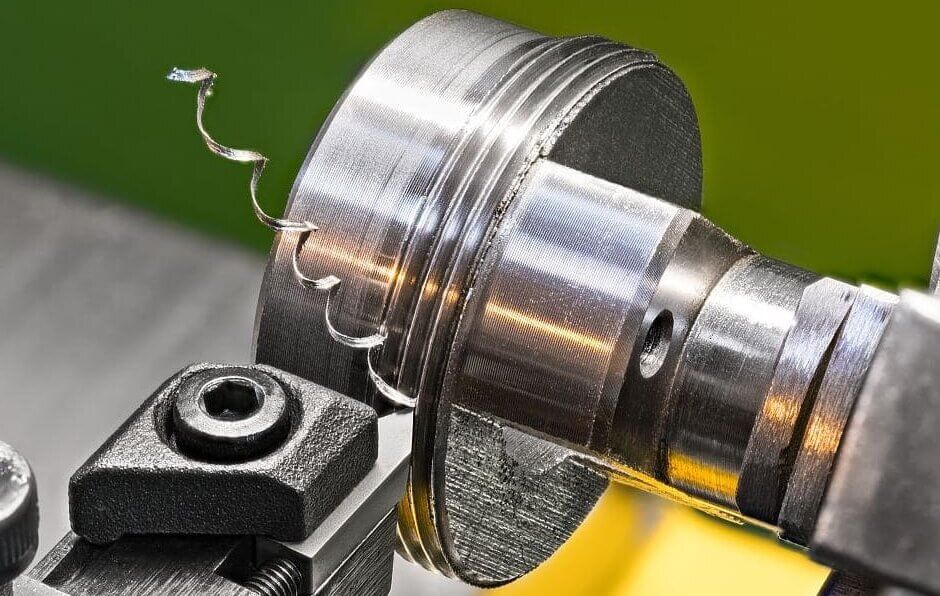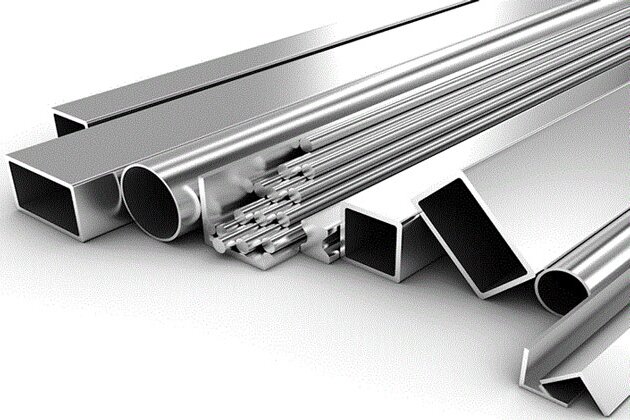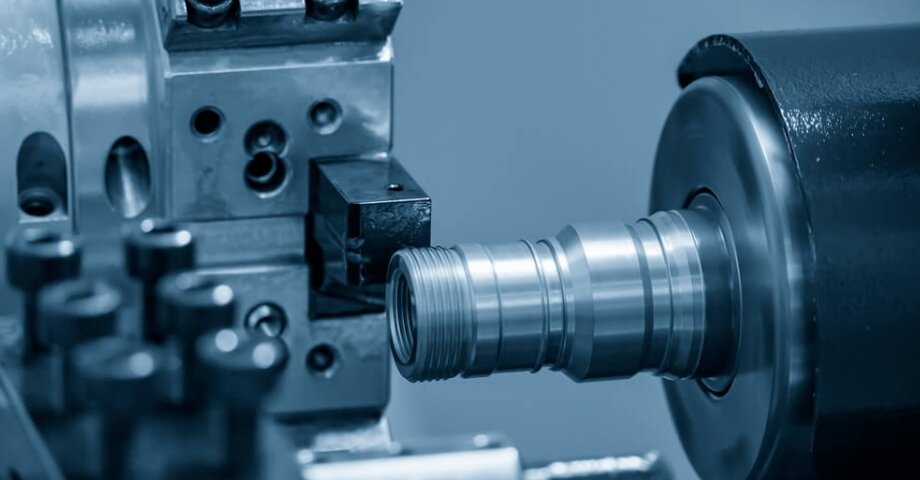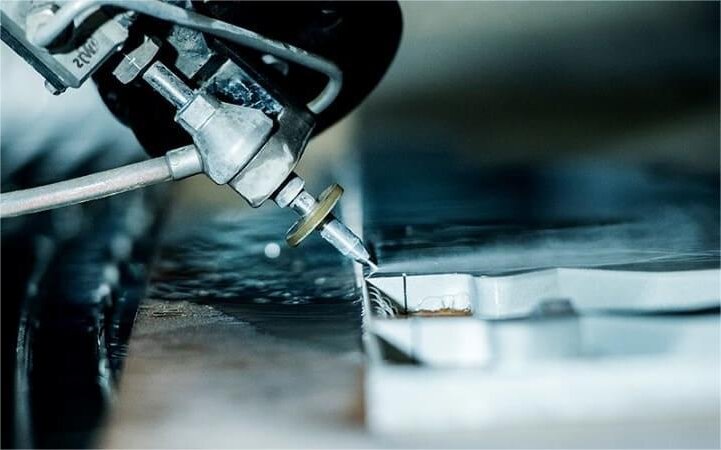스테인리스 스탬핑은 평평한 스테인리스 스틸 시트를 복잡한 모양으로 변형하는 중요한 제조 기술입니다. 많은 엔지니어와 디자이너는 이 과정에서 정확한 치수를 달성하고 품질을 유지하는 데 어려움을 겪습니다. 관련 단계를 이해하면 이러한 문제를 완화하고 제품 결과를 개선할 수 있습니다.
다음 제조 프로젝트를 위한 정보에 입각한 결정을 내릴 수 있도록 각 스테인리스 스틸 스탬핑 공정 단계를 세분화해 보겠습니다.
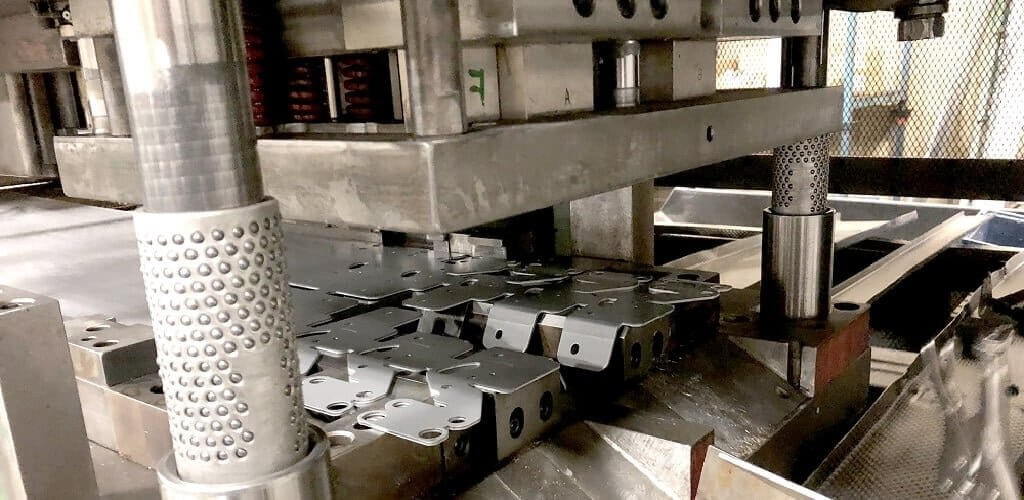
스테인리스 스탬핑이란 무엇인가요?
스테인리스 스탬핑은 맞춤형 설계 금형과 강력한 기계식 또는 유압 프레스를 사용하여 스테인리스 강판을 성형하는 냉간 성형 공정입니다. 이 공정은 제어된 압력을 가하여 금속을 원하는 구성으로 절단, 구부리고 성형하여 동일한 부품을 만듭니다.
스탬핑은 간단한 브래킷부터 복잡한 자동차 부품에 이르기까지 다양한 제품 요구 사항을 처리하는 동시에 엄격한 공차를 유지합니다.
스탬핑에 사용되는 스테인리스 스틸의 종류
스테인리스강 재종의 선택은 스탬핑 성공과 최종 제품 성능에 직접적인 영향을 미칩니다. 각 재종은 다양한 응용 분야와 성형 요구 사항에 따라 특정 이점을 제공합니다.
스테인리스 스틸 등급 이해
스테인리스 스틸은 다양한 등급으로 제공되며, 각 등급은 스탬핑 애플리케이션의 성능에 영향을 미치는 고유한 특성을 가지고 있습니다. 가장 일반적인 유형으로는 오스테나이트, 마르텐사이트, 페라이트 및 듀플렉스 스테인리스 스틸이 있습니다.
스탬핑에 적합한 스테인리스 스틸 선택
스탬핑에 적합한 스테인리스 강종을 선택하는 것은 애플리케이션의 특정 요구 사항에 따라 달라집니다. 범용 스탬핑의 경우 성형성과 내식성이 뛰어나 304 스테인리스강이 널리 사용됩니다. 316 스테인리스 스틸은 내식성이 뛰어나 염화물이나 산에 노출되는 환경에 선호됩니다.
더 높은 강도가 필요한 경우 경도가 높은 409 스테인리스 스틸을 선택할 수 있습니다. 스탬프가 찍힌 부품의 용도를 이해하면 선택 과정에 도움이 됩니다.
스테인리스 스틸 스탬프 찍는 방법: 단계별
1단계: 주사위 만들기
스테인리스 스틸 스탬핑의 첫 번째 단계는 다이를 설계하고 제작하는 것입니다. 여기에는 최종 부품의 모양과 치수를 결정하는 작업이 포함됩니다.
2단계: 자료 준비
다음으로 스탬핑할 스테인리스 스틸 시트를 준비합니다. 여기에는 시트를 적절한 크기로 자르고 기름, 먼지 또는 녹과 같은 오염 물질이 없는지 확인하는 작업이 포함됩니다.
3단계: 다이 설치 및 프레스 설정하기
다이가 준비되고 재료가 준비되면 다이를 스탬핑 프레스에 설치합니다. 재료 두께와 작업 유형에 필요한 사양에 따라 미디어를 설정합니다.
4단계: 윤활유 바르기
스테인리스 강판 표면에 윤활제를 얇게 뿌리거나 도포합니다. 이렇게 하면 스탬핑 공정 중 마찰을 줄이고 다이의 수명을 연장하는 데 도움이 됩니다.
5단계: 스탬핑 프로세스 시작
모든 것이 제자리에 있으면 프레스를 활성화하여 스탬핑 프로세스를 시작합니다. 다이가 스테인리스 강판을 원하는 형태로 강제로 성형합니다.
6단계: 첫 번째 부품 검사
첫 번째 조각이 스탬프가 찍힌 후에는 정확성을 주의 깊게 검사합니다. 불완전한 절단, 버 또는 잘못된 치수와 같은 결함이 있는지 확인합니다. 필요한 경우 프레스를 조정합니다.
7단계: 프로세스 반복
초기 부품의 품질에 만족하면 스탬핑 프로세스를 반복하여 생산을 계속 진행합니다.
8단계: 마무리
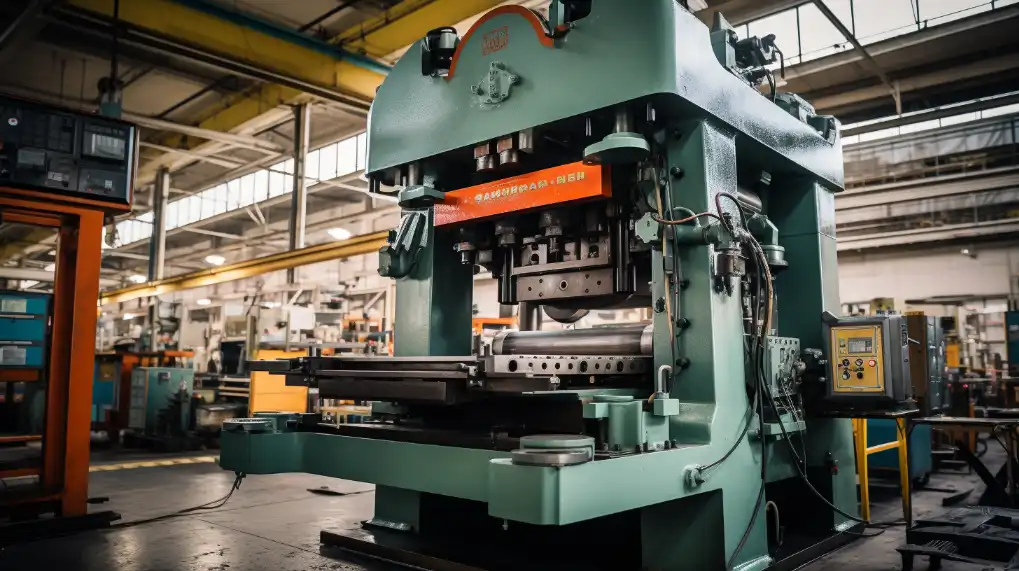
스테인리스 스틸 스탬핑의 이점 이해
스탬핑 스테인리스 스틸은 다양한 이점을 제공하여 다양한 산업 분야에서 선호되는 소재입니다. 다음은 몇 가지 주요 이점입니다:
- 대량, 저비용 생산: 스탬핑을 사용하면 복잡한 부품을 단위당 낮은 비용으로 대량 생산할 수 있습니다.
- 재료 낭비 감소: 스탬핑은 다른 제조 공정에 비해 폐자재 발생이 적기 때문에 지속 가능한 옵션입니다.
- 부식 저항: 스테인리스 스틸은 크롬 함량으로 인해 본질적으로 부식에 강합니다.
- 강도와 내구성: 스테인리스 스틸은 응력과 충격에도 강도를 유지하므로 기계적 하중을 견뎌야 하는 부품에 이상적입니다.
- 정확성과 일관성: 스탬핑 공정은 엄격한 공차와 높은 반복성을 허용하여 각 부품이 정확한 사양을 충족하도록 보장합니다.
스테인리스 스탬핑의 응용 분야
스테인리스 스탬핑은 내구성, 내식성 및 다용도성으로 인해 다양한 산업 분야에서 널리 활용되고 있습니다. 다음은 몇 가지 주요 응용 분야입니다:
자동차 산업
스테인리스 스틸 스탬핑 부품은 자동차 제조에 필수적인 부품입니다. 연료 시스템 부품, 배기 시스템, 브래킷 및 구조 요소에 사용됩니다.
의료 기기
의료 분야에서는 수술 기구, 치과용 도구 및 이식형 기기에 스테인리스 스틸 스탬핑을 사용합니다. 이 소재의 생체 적합성과 멸균 용이성은 이러한 부품이 엄격한 위생 기준을 충족하도록 보장합니다.
전자제품
스테인리스 스틸은 전자 산업에서 커넥터, 스위치, 배터리 접점 및 브래킷에 사용됩니다. 전도성과 내구성이 뛰어나 다양한 전자 애플리케이션에 적합합니다.
항공우주
스테인리스 스틸 스탬핑은 랜딩 기어 부품, 브래킷 및 구조 요소와 같은 부품을 생산하는 항공우주 제조 분야에서 매우 중요합니다. 이러한 부품은 높은 강도와 신뢰성을 유지하면서 극한의 조건을 견뎌야 합니다.
소비재
스테인리스 스틸 스탬핑은 조리기구, 수저, 경첩, 장식용 액세서리 등 다양한 가정용품을 만드는 데 사용됩니다. 이 소재의 매력적인 외관과 내식성으로 인해 소비재에 많이 사용됩니다.
산업 장비
밸브, 펌프, 기계 하우징과 같은 부품은 내구성을 보장하고 부식성 환경에 견디기 위해 스테인리스 스틸 스탬핑을 사용하는 경우가 많습니다.
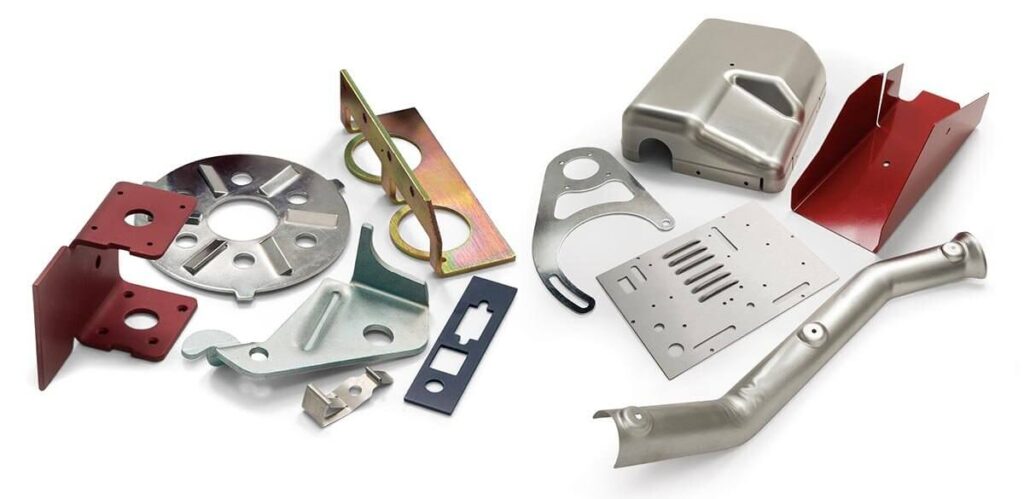
스테인리스 스틸 스탬핑 기술
최신 스탬핑 기술은 다양한 제조 요구 사항을 충족하도록 발전해 왔습니다. 각 방법은 간단한 브래킷부터 복잡한 의료 기기에 이르기까지 특정 애플리케이션에 고유한 이점을 제공합니다.
스테인리스 스틸용 프로그레시브 다이 스탬핑
프로그레시브 다이 스탬핑 는 스테인리스 스틸 부품을 생산하는 효율적인 방법입니다. 일련의 다이를 통해 연속적인 금속 스트립을 공급하고 각 스테이션이 굽힘 또는 펀칭과 같은 특정 작업을 수행하는 방식입니다.
복잡한 부품을 위한 전사 다이 스탬핑
다이 스탬핑 전송 는 여러 번의 작업이 필요한 복잡한 스테인리스 스틸 부품을 제작합니다. 이 방법은 블랭크를 금속 스트립에서 분리하고 운송 시스템을 사용하여 여러 스테이션 사이를 이동합니다.
딥 드로잉과 스테인리스 스탬핑에서의 역할
딥 드로잉 스테인리스 강판을 깊고 속이 빈 형태로 성형합니다. 펀치는 금속을 다이 캐비티로 끌어당겨 두께를 유지하면서 늘립니다.
펀칭 및 블랭킹이 스테인리스 스틸 부품에 미치는 영향
펀칭 및 블랭킹은 판재에서 특정 모양을 절단하는 스테인리스 스틸 스탬핑의 핵심 공정입니다. 블랭킹 은 원하는 모양을 제거하여 공백을 만들고 펀칭은 구멍이나 컷아웃을 만듭니다.
스테인리스 스틸 스탬핑과 다른 금속 성형 기술 비교
스테인리스 스틸 스탬핑을 다음과 같은 다른 금속 성형 기술과 비교할 때 CNC 가공 그리고 주조를 사용하면 몇 가지 주요 차이점이 나타납니다:
정밀도와 복잡성
CNC 가공은 공차가 엄격하고 형상이 복잡한 부품을 생산하는 데 탁월합니다. 컴퓨터로 제어되는 도구를 사용하여 단단한 블록에서 재료를 제거하므로 복잡한 디자인이 가능합니다.
반면, 스탬핑은 일반적으로 대량 생산에 더 빠르지만 복잡한 모양에 대해서는 동일한 수준의 정밀도를 얻지 못할 수 있습니다.
생산 속도
스탬핑은 한 번의 작업으로 여러 부품을 만들 수 있기 때문에 일반적으로 대량 생산에 더 빠릅니다.
CNC 가공은 정밀하지만 사이클 시간이 길어 대량 생산에는 효율성이 떨어집니다.
주조는 복잡한 모양을 만들 수 있지만 금형 준비 및 냉각 공정으로 인해 리드 타임이 길어지는 경우가 많습니다.
비용 고려 사항
스탬핑은 재료 낭비를 최소화하고 노동력을 덜 필요로 하기 때문에 대량 생산 시 단위당 비용이 낮은 경향이 있습니다.
CNC 가공은 특수 장비가 필요하고 처리 시간이 길기 때문에 비용이 더 많이 들 수 있습니다.
주조는 대량 생산 시 비용 이점을 제공할 수 있지만 폐기율이 높아지고 설정 비용이 더 오래 걸릴 수 있습니다.
결론
스테인리스 스틸 스탬핑은 튼튼하고 내구성이 뛰어난 부품을 빠르고 효율적으로 제작할 수 있는 방법입니다. 빠른 생산 속도, 비용 효율성, 우수한 내식성 등의 장점이 있어 다양한 용도에 이상적입니다.
다음 프로젝트를 위해 스테인리스 스틸 스탬핑을 살펴볼 준비가 되셨다면, 문의하기 지금 바로 문의하여 제조 목표를 달성하는 데 어떻게 도움을 드릴 수 있는지 알아보세요!
안녕하세요, 저는 케빈 리입니다

지난 10년 동안 저는 다양한 형태의 판금 제작에 몰두해 왔으며 다양한 워크숍에서 얻은 경험에서 얻은 멋진 통찰력을 이곳에서 공유했습니다.
연락하세요

케빈 리
저는 레이저 절단, 굽힘, 용접 및 표면 처리 기술을 전문으로 하는 판금 제조 분야에서 10년 이상의 전문 경험을 갖고 있습니다. Shengen의 기술 이사로서 저는 복잡한 제조 문제를 해결하고 각 프로젝트에서 혁신과 품질을 주도하는 데 최선을 다하고 있습니다.

